Morning Glory Control: How To Kill Morning Glory Weeds
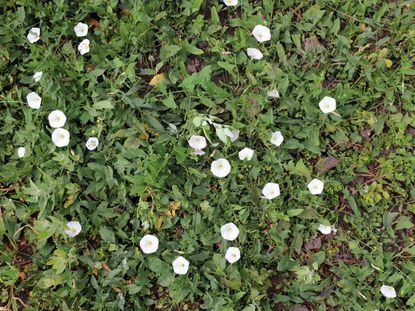

Morning glory weeds in the garden can be viewed as a nemesis due to the rapid spread and ability to take over garden areas. Alternately, you can release that tension and go Zen by admiring the twining vines and lovely soft flowers. Most gardeners want to know how to kill morning glory weeds, but if you have a big back forty or a wild spare lot, the morning glory vine is an excellent no-care plant that will persist and produce lovely spring and summer floral displays. Morning glory weed control in the cultivated landscape, however, is essential to prevent the plant from taking over.
Morning Glory vs. Bindweeds
Morning glory belongs to a family of unique and tenacious plants called Ipomoea. It is very closely related to the Convolvulus, or bindweed plants, which are perennial. Morning glory vine is an annual but reseeds itself so successfully you really wouldn't know it. The bindweed plants grow from rhizomes, or underground storage structures that promote the spread of the weed. They are hardy and tenacious, opportunistic weeds that get into cracks and crevasses and are nearly impossible to remove. Many gardeners classify morning glory bindweeds as one type of plant. On the contrary, their separate taxonomy and growth patterns clearly identify the two as very different plants with similar flowers.
Morning Glory Vine Info
Another difference between morning glory and bindweed is the availability of the annual seeds and lack of access to bindweed seeds. Who would want to grow a weed that can visibly grow in a day, spreads over almost any surface, and doesn't die unless you apply chemicals? Morning glory is more accommodating and the seeds are widely available in a host of colors. The slender stems grow rapidly and twist around each other for support. Flowers are funnel shaped, sometimes with a deeper or lighter throat. Garden supply centers carry the plant in pink, rose, purple, lavender, and white. The name morning glory vine stems from the flowers' habit of opening in the first rays of morning light, and closing when the full heat and sun of the day arrive. Morning glory weeds in gardens are useful as groundcovers, natural décor for fences and barriers, and beautifiers for that broken shed or barn that you still haven't removed. Do be cautious where you plant this vine though, as it grows with an uncanny speed and can be very invasive and difficult to remove.
How to Kill Morning Glory
Many gardeners are confused and call morning glory bindweeds. While the plants are separate species, they do have similar stubborn growth habits and are difficult to eradicate just with pulling. Morning glory weed control is a multi-part task. Pre-emergent herbicides will not work on this plant and pulling is labor intensive and tends to just break the vine, which may even re-sprout. Completely removing the plants can be a maddening, many years long task. The use of thick mulches or weed barrier fabric can help smother the seedlings in spring. Do not allow the vines to flower and set seed to prevent some of the sprouts the following spring. Systemic and broad leaf herbicides have some effect, but you need to spray early in the season when the plants are young. Painting it on the leaves helps prevent drift and surrounding plant injury. You will need to be vigilant and monitor for new plants and treat them. Controlling morning glory will take several seasons, and persistent seeds in soil can sprout years later. Morning glory vine can be a glory in the garden, but it can also be a royal pain, so think once and twice before you install this rampant colorful vine. Note: Chemical control should only be used as a last resort, as organic approaches are safer and much more environmentally friendly.
Gardening tips, videos, info and more delivered right to your inbox!
Sign up for the Gardening Know How newsletter today and receive a free download of our DIY eBook "Bring Your Garden Indoors: 13 DIY Projects For Fall And Winter".

Bonnie Grant is a professional landscaper with a Certification in Urban Gardening. She has been gardening and writing for 15 years. A former professional chef, she has a passion for edible landscaping.
-
 Elegant Exotics: 8 Beautiful Amaryllis Varieties That Will Brighten Any Holiday Display
Elegant Exotics: 8 Beautiful Amaryllis Varieties That Will Brighten Any Holiday DisplayWhether red, pink, white or variegated, the right amaryllis varieties can enhance any living space, especially during the holidays. We round up eight of the most exquisite
By Bonnie L. Grant
-
 Forage For Herbs: 7 Tasty And Safe Wild Herbs To Pick Close To Your Own Backyard
Forage For Herbs: 7 Tasty And Safe Wild Herbs To Pick Close To Your Own BackyardIn addition to growing your own herbal staples, did you know there are several wild options out there that are safe and tasty – and free? Try foraging these 7 wild herbs
By Amy Grant
-
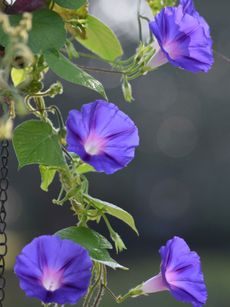 Growing Morning Glories From Seed: A Guide To Planting Morning Glory Seeds
Growing Morning Glories From Seed: A Guide To Planting Morning Glory SeedsBy Laura Miller
-
 Watering Morning Glories: How Much Water Do Morning Glories Need
Watering Morning Glories: How Much Water Do Morning Glories NeedEasy care and fast growing, morning glories offer a sea of blossoms in pink, purple, red, blue and white. Like most other summer annuals, they need water to thrive. Click here for information about morning glory watering needs.
By Teo Spengler
-
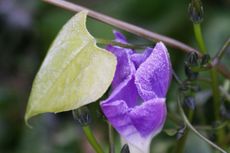 Yellow Morning Glory Foliage – Treating Yellow Leaves On Morning Glories
Yellow Morning Glory Foliage – Treating Yellow Leaves On Morning GloriesThere is a risk of yellowing leaves on morning glories, which can give the plants an unsightly look and damage their health. Click this article to learn about what to do when your morning glory leaves are yellow.
By Liz Baessler
-
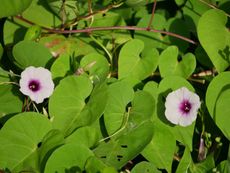 Why Morning Glory Is Not Blooming: Getting Morning Glories To Flower
Why Morning Glory Is Not Blooming: Getting Morning Glories To FlowerMorning glory is a prolific vining plant that produces masses of blooms. Non-flowering plants aren't the norm but is fixable. Click here for suggestions.
By Bonnie L. Grant
-
 Morning Glory Pest Control: Dealing With Common Pests Of Morning Glory
Morning Glory Pest Control: Dealing With Common Pests Of Morning GloryMorning glories are hardy plants and are normally healthy, but sometimes insects on morning glory vines harm the health of the plant. Read this article to learn more about what pests you can expect.
By Susan Patterson
-
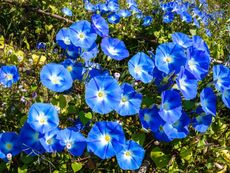 Problems With Morning Glories: Morning Glory Vine Diseases
Problems With Morning Glories: Morning Glory Vine DiseasesMorning glories are typically hardy vines; however, they can sometimes suffer problems. Read this article to find out what these may be and how to treat them promptly. Click here for more info.
By Susan Patterson
-
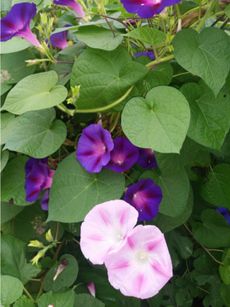 Morning Glory Trimming: When And How To Prune Morning Glory Plants
Morning Glory Trimming: When And How To Prune Morning Glory PlantsMorning glory vines can reach lengths of up to 15 feet (4.5 m.), twining themselves around anything. To keep these plants well managed, some morning glory trimming may be necessary. This article will help with that.
By Jackie Carroll
-
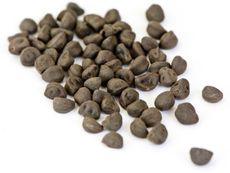 Collecting And Storing Morning Glory Seeds: How To Store Seeds Of Morning Glories
Collecting And Storing Morning Glory Seeds: How To Store Seeds Of Morning GloriesMorning glory flowers are a cheerful, old-fashioned type of bloom. Learn how to save seeds of the morning glory in this article to continue your garden in next spring's planting without buying more seed packets.
By Anne Baley